What is EULA? End User License Agreement Explained
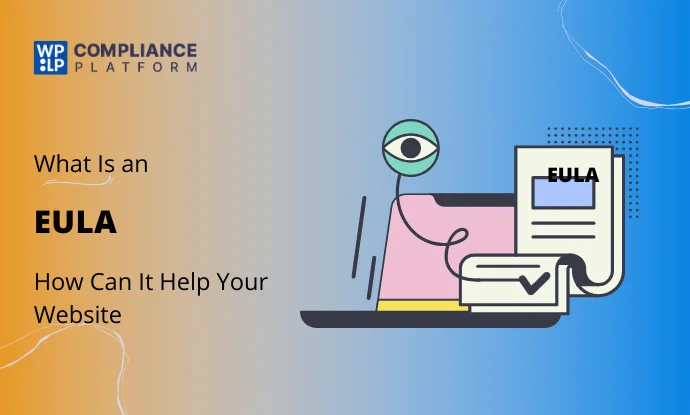
Summary
Our article explains why EULAs matter and what they should include. It helps developers and businesses protect their software, reduce legal risks, and maintain control. Read the full article to learn more.
Wondering about what is EULA and how it may help you?
In Layman’s terms, the EULA, or End-user License Agreement, is a legal document that helps you protect your intellectual property and define user rights.
As software becomes a fundamental part of our daily lives, we must understand the significance of a well-crafted End-user License Agreement.
This article will explore the essential components of an effective EULA, common mistakes to avoid, and practical steps to create or generate a tailored agreement for your business.
Remember to read through to the end!
- What is the End User License Agreement (EULA)?
- When is an EULA Needed?
- Difference Between an EULA, ToS/ToU, and SLA
- Consequences of Non-Compliance with EULA Software Regulations
- How To Create an EULA?
- Sample End User License Agreements
- Where Should You Display End User License Agreement On Your Website?
- FAQ
- Conclusion
What is the End User License Agreement (EULA)?
To begin with the basics, let’s first understand what End-user License Agreement means.
Often, as a user, when you install or use any software, you must have come across the need to agree to certain conditions before you are allowed to use it. That’s basically what an EULA is.
An End User License Agreement (EULA) is a legal contract outlining the terms of use for a software application between the software developer and the user.
It specifies how the software can be used, any restrictions on its use, and the rights and responsibilities of both parties.
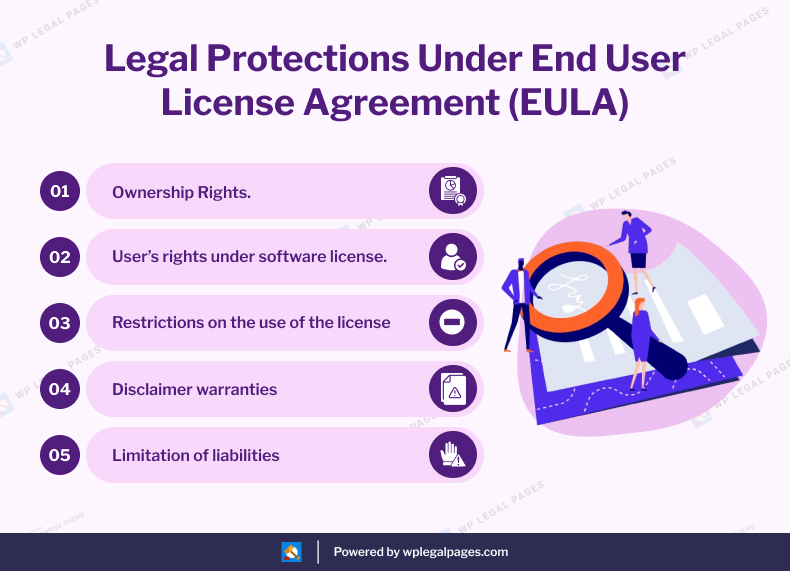
Why Should You Comply With the End User License Agreement (EULA)?
Complying with the End User License Agreement (EULA) is essential for users and developers for several reasons.
- Protect Your Intellectual Property Rights: Using an EULA for your website ensures you use the software as intended. The EULA often contains important guidelines and restrictions that help protect the software from misuse or piracy.
- Provides Legal Protection: End User License Agreement (EULA) is a legally enforceable contract non-compliance that may lead to legal consequences such as hefty fines and penalties.
- Helps Building Trust & Accountability: Compliance with EULA software regulations promotes a fair and respectful relationship between developers and users, enhancing trust and accountability in the software ecosystem.
When is an EULA Needed?
Well, now that we know what an EULA is and why we must have it on our website. You may require an EULA on your website under several scenarios involving:
- Software Installation: Whenever you install software, especially proprietary or commercial software, an EULA is typically presented. You must agree to it before you can proceed with the installation.
- Distribution of Software: If you’re developing software, an EULA must outline the terms of use, distribution rights, and restrictions. This protects your intellectual property and sets clear guidelines for users.
- Cloud Services or SaaS Usage: Software as a Service (SaaS) or cloud-based services also come with EULAs. These agreements define how the services can be used, data handling policies, and user responsibilities.
- Use of Mobile Apps: Mobile applications often include an EULA that users must agree to before using the app. This is particularly important for apps that access sensitive information or offer in-app purchases.
- Purchase of Software Licenses: When businesses or educational institutions purchase software licenses for multiple users, an EULA outlines the terms of use for all users within the organization.
Difference Between an EULA, ToS/ToU, and SLA
While the terms End User License Agreement (EULA), Terms of Service/Use (ToS/ToU) , and Service Level Agreement (SLA) may sound similar each of these is different and serves a different purpose.
| EULA (End-User License Agreement) | ToS/ToU (Terms of Service/Use) | SLA (Service Level Agreement) | |
|---|---|---|---|
| Purpose | Legal contract for software usage | Rules for using a website or online service | Formal agreement on service expectations |
| Scope | Usage rights, installation, copying, modifications | Acceptable behavior, prohibited activities, account duties | Performance metrics, uptime, response times, remedies |
| Audience | Software users | Users of websites or online services | Clients of service providers |
| Focus | Compliance with software license terms | Safe and lawful use of the service | Meeting service standards and providing remedies |
| Acceptance | During software installation | When signing up for or using an online service | In business-to-business (B2B) service contracts |
| Protection | Software creator’s intellectual property | Overall service environment for users | Client’s interests in service reliability and performance |
Consequences of Non-Compliance with EULA Software Regulations
Non-compliance with End User License Agreement regulations can lead to several serious consequences for individuals and businesses alike:
- Legal Action: Developers and publishers may pursue legal remedies against violators, which can result in costly lawsuits, fines, or settlements. This legal exposure can be detrimental to a business’s financial health.
- Loss of Access: Violating EULA terms can terminate software access. Businesses may be unable to use critical tools, disrupting operations and productivity.
- Reputation Damage: Non-compliance can harm the business’s reputation, losing trust among customers and partners.
- Increased Scrutiny: Once a violation is detected, businesses may face increased scrutiny from software vendors, leading to more frequent audits and oversight.
- Intellectual Property Risks: Non-compliance undermines the protection of intellectual property rights, potentially encouraging further violations and harming the overall software ecosystem.
How To Create an EULA?
Depending on your resources and expertise, creating an End User License Agreement can be accomplished through various methods.
Here are some effective methods to consider:
1. Self Drafting An Agreement
If you have a legal background or are willing to learn, you can research best practices for drafting EULAs. You can start from scratch, outlining the key components you want to include and taking references from peers.
While this method allows maximum customization, it requires a thorough understanding of legal terminology and its implications. You might have to go through a tedious learning and implication process.
Things you must include when drafting an End User License Agreement (EULA):
- Parties Involved: Identify the software developer/publisher and the end user.
- Definition of Software: Describe the licensed software’s name and version.
- Grant of License: Specify the type of license granted (e.g., non-exclusive, non-transferable) and users’ rights.
- Usage Restrictions: Outline prohibited actions, such as copying, modifying, or redistributing the software.
- Term and Termination: Define the duration of the license and the conditions for termination by either party.
- Intellectual Property Rights: Affirm the developer’s ownership of the software and related intellectual property.
- Limitation of Liability: Include disclaimers that limit the developer’s liability for damages arising from software use.
- Governing Law: Specify the jurisdiction that governs the agreement.
- Amendments: State how the EULA can be modified or updated.
- Acceptance Clause: Explain how users can accept the EULA (e.g., during installation or through a click-wrap agreement).
- Contact Information: Provide contact details for users to ask questions or concerns regarding the EULA.
2. Consulting Legal Professionals
Consulting a legal professional is advisable for businesses with specific legal needs or those dealing with complex software. A lawyer can draft an EULA tailored to your business and ensure compliance with relevant laws.
Further, if you have an existing legal agreement, a legal expert can review it to ensure it remains relevant and legally sound.
However, hiring a legal professional might be expensive and time-consuming, resulting in delays and reduced operational efficiency
3. Legal Page Generators
The best advisable method to create an EULA agreement is to use a legal page generator.
Several online legal page generators can help you create an end-user license agreement quickly and easily. These tools typically guide you through questions about your software and business model, generating a tailored agreement.
If you use a WordPress website, WP Legal Pages is one of the most effective plugins for generating an EULA. It is a powerful legal page generator that allows you to custom-create a blog’s privacy policy tailored specifically for your business.
The plugin is simple to use and supports an intuitive wizard that helps you design a privacy policy template from start to finish.
You only need to download the plugin and sign up. Next, the wizard will walk you through a questionnaire to help you create a blog privacy policy.
Furthermore, it allows you to develop policy templates in various languages, including English, French, German, Portuguese, Italian, and others.
How To Create An EULA Using WP Legal Pages
To create an End-user license agreement for your WordPress site, follow the following steps:
Navigate over your WordPress Dashboard and click on Plugins > Add New.

Search for WPLegalPages in the search bar.

Click on the Install Now Button.

Click on the Activate button and activate the plugin.

Once the plugin is active, you can directly access it from your WordPress Dashboard.

From your Dashboard, click WPLegalPages and click Accept to create your legal pages.

To create a Privacy Policy for your website, click Create Legal Page from the WP Legal Pages menu.
[Note: The EULA template offered by WP Legal Pages is available only with the Pro version, allows you to access up to 24 other legal templates, and comes at a very affordable price.]
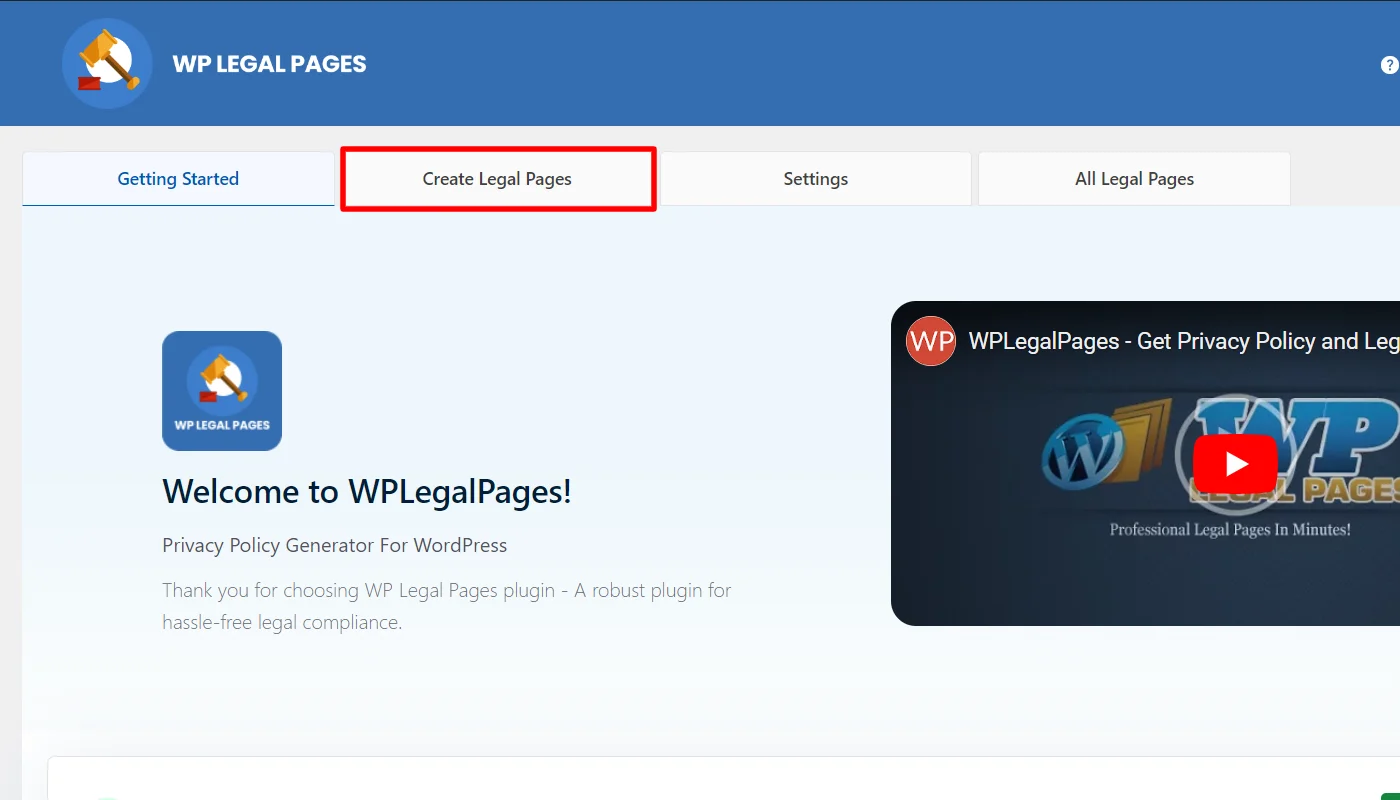
You will now see templates available. Scroll down to the bottom of the page and click Create on the End User License Agreement.

Next, enter the basic details required and click next.
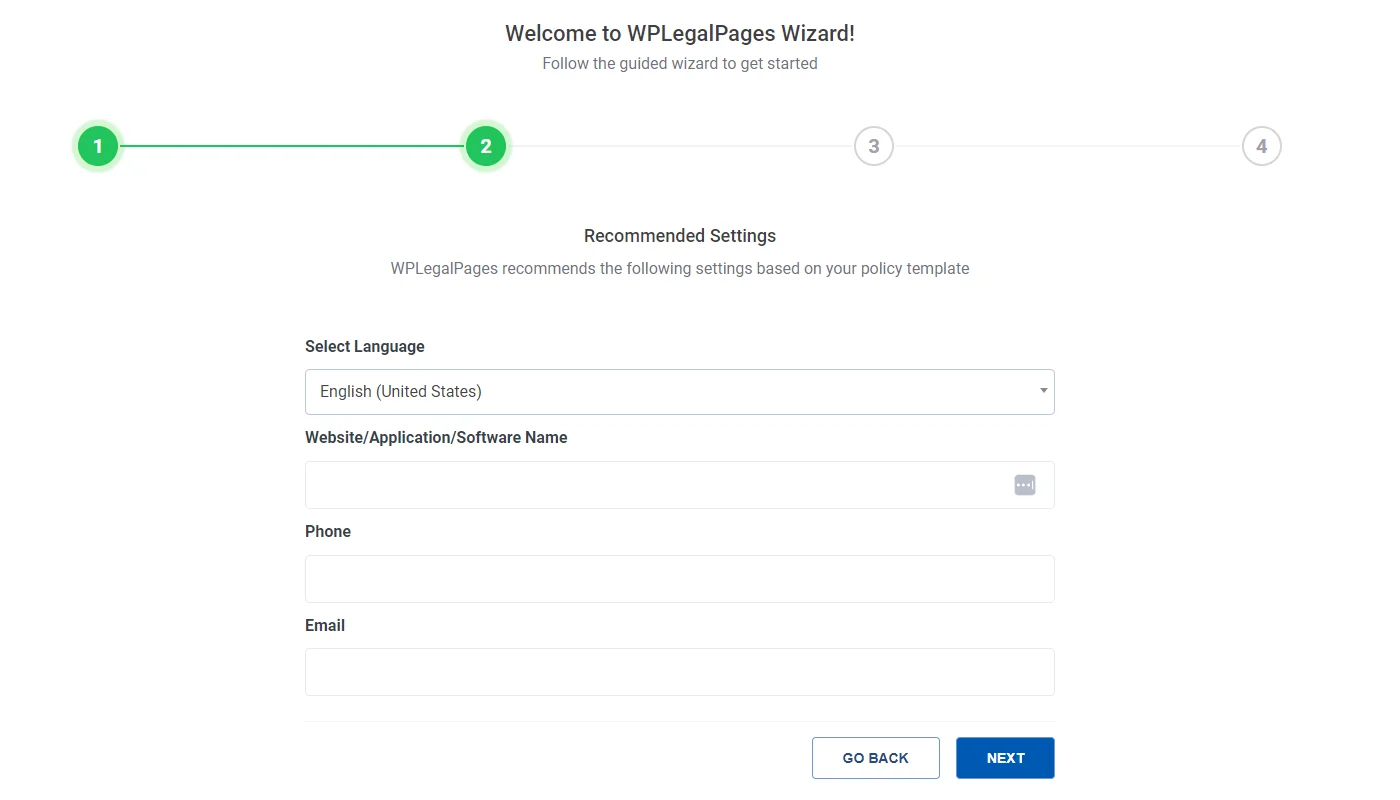
After this, enter the further details asked and click next.
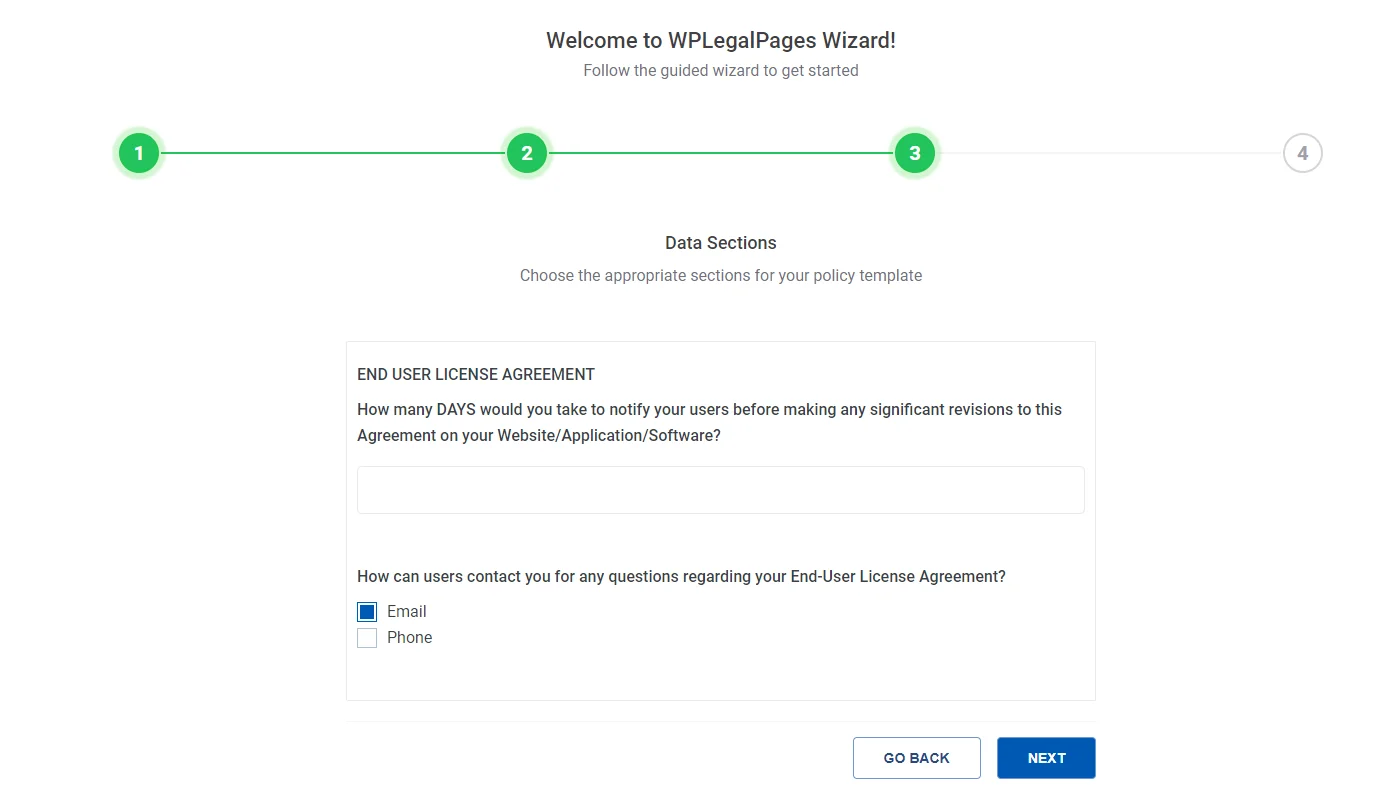
The End user license agreement is now ready for further changes; scroll down and click on Create and Edit.
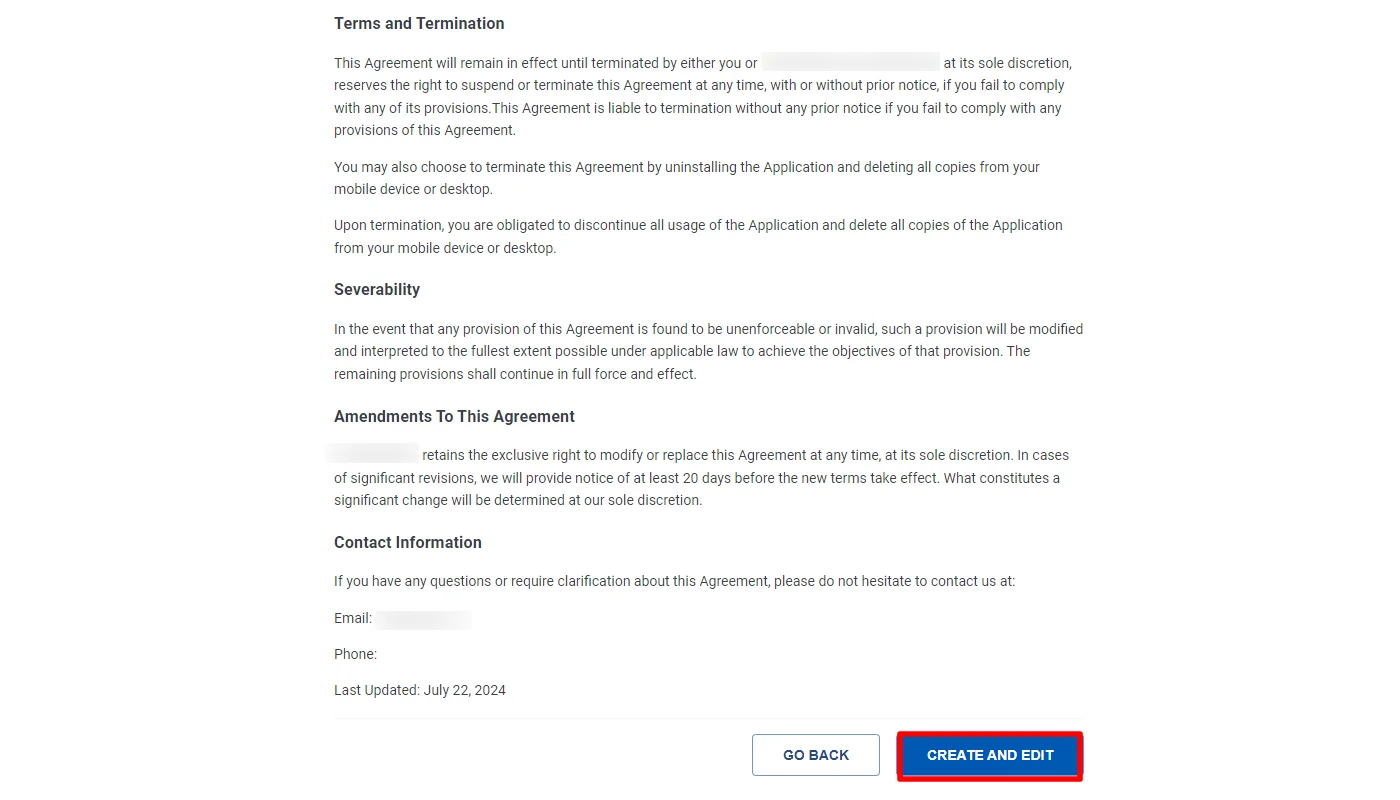
Next, you can customize the EULA agreement draft and click Publish once done.
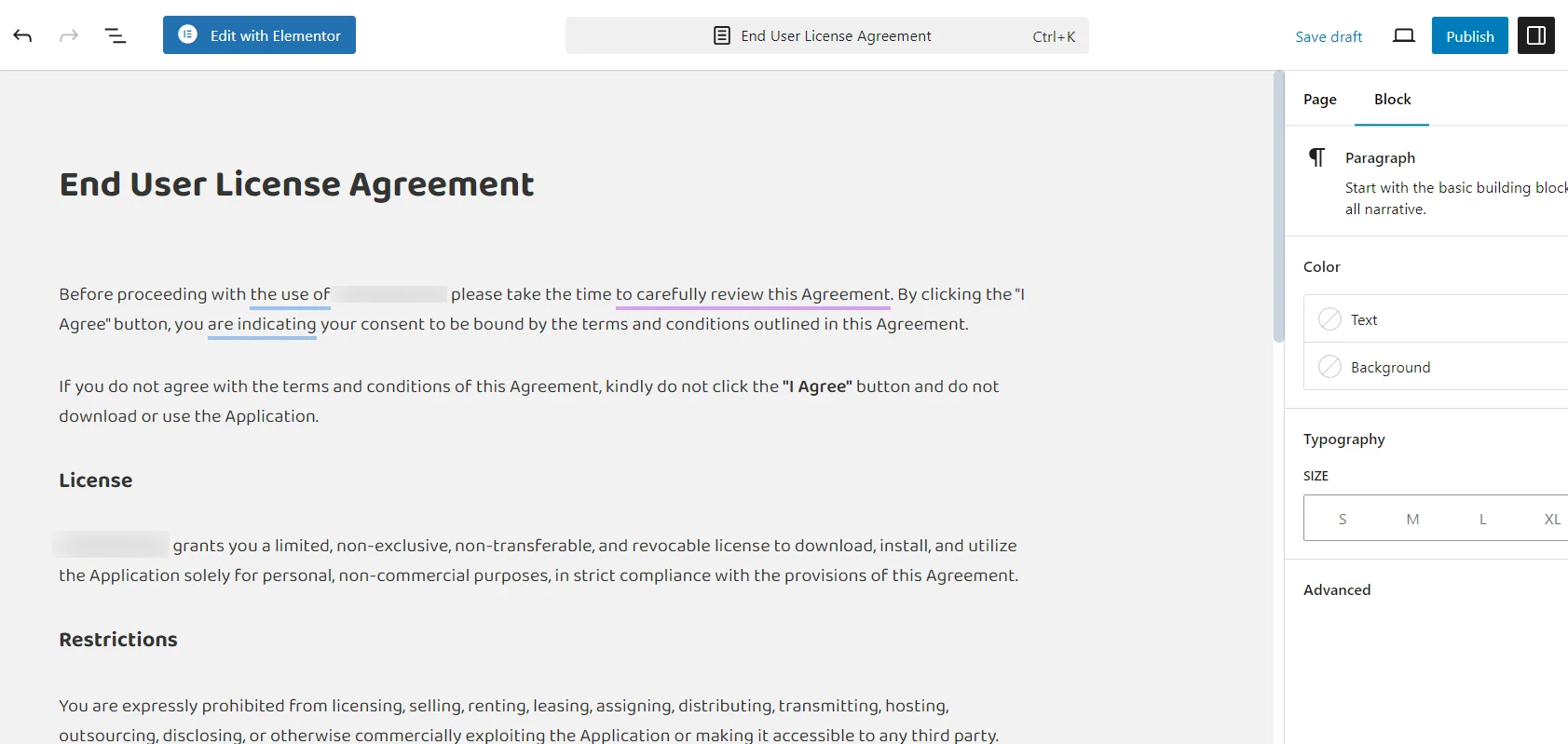
Following the mentioned steps, you can easily create an End User License Agreement (EULA) for your WordPress website.
Sample End User License Agreements
Here are a few examples of End User License Agreements (EULAs) you may refer to:
Nvidia End User License Agreement
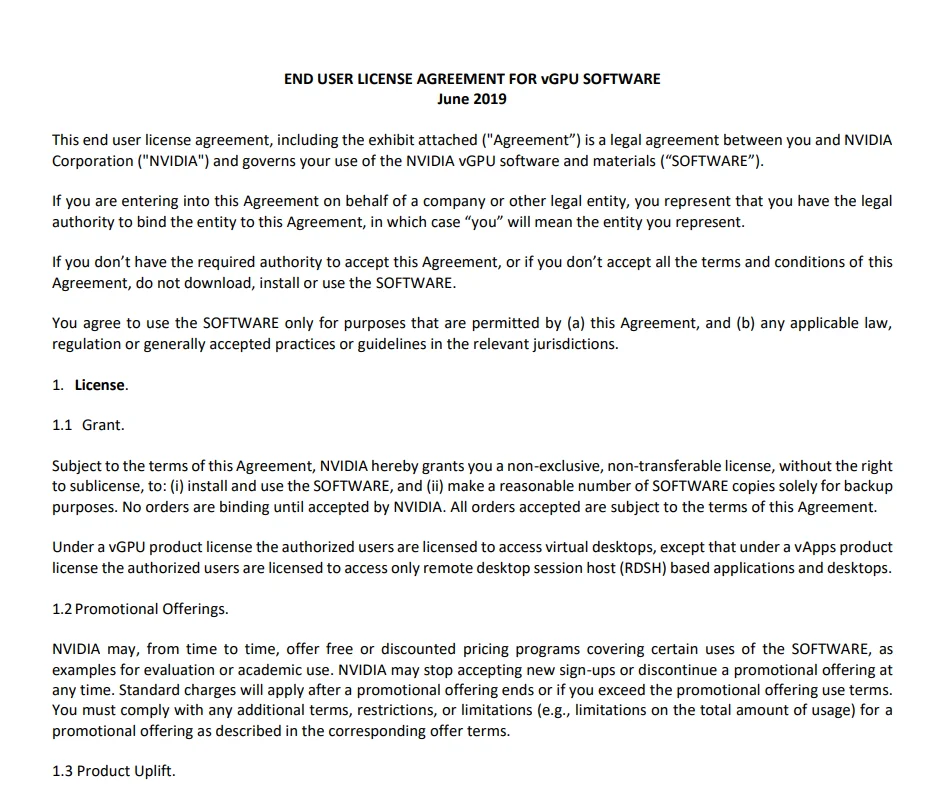
Adobe End User License Agreement
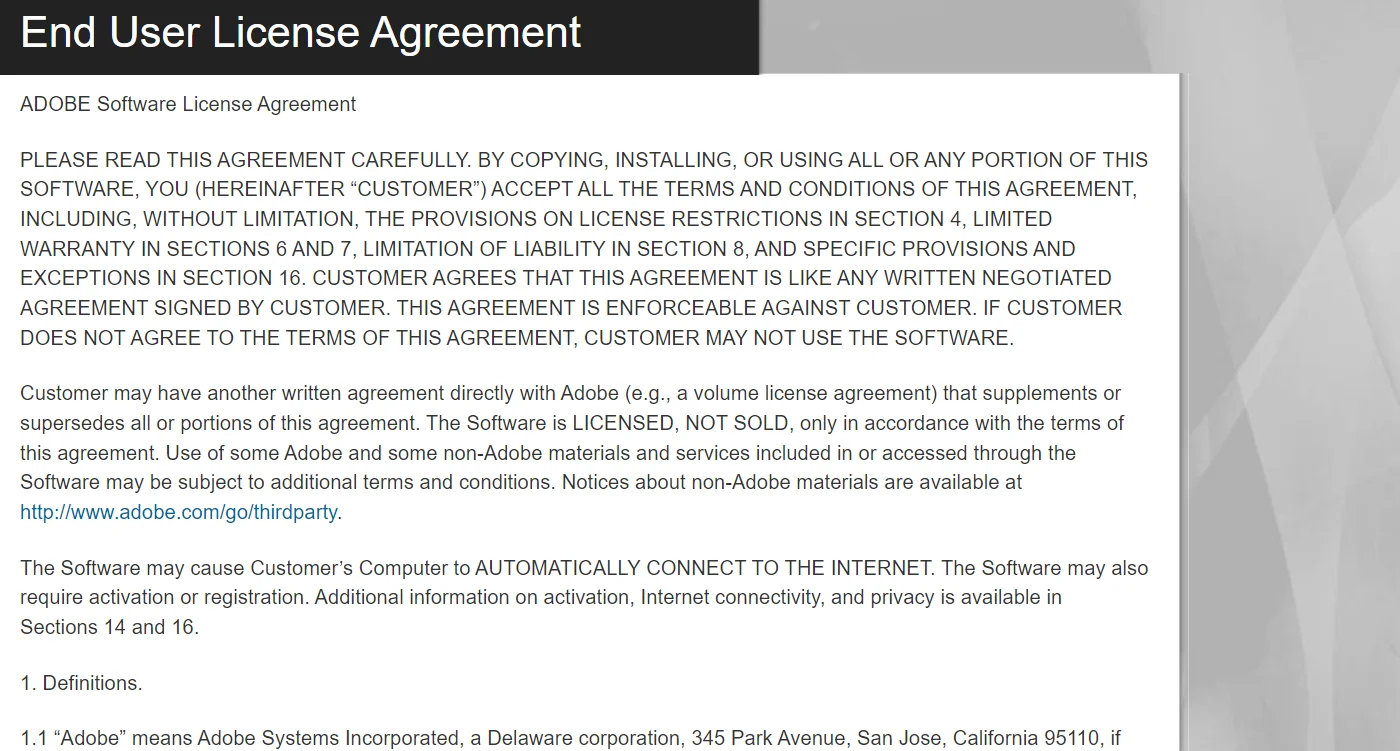
Where Should You Display End User License Agreement On Your Website?
Displaying an End User License Agreement (EULA) on your website is crucial for user awareness and compliance. Typically, the EULA should be accessible in the following locations, such as:
- Footer Links: You can consider including a link in the website footer for easy access on all pages.
- During Installation: You can also present the EULA during the software installation process, requiring user acceptance before proceeding.
- Download Page: A link to the EULA on the software download page is also suggested, ensuring users can review it before obtaining the software.
- Support or Legal Section: Within your support or resources area, you can consider creating a dedicated section for legal documents, including the EULA.
This ensures users can easily find and understand the terms of use.
FAQ
EULA law refers to the legal framework governing End-User License Agreements, which are contracts between software developers and users. These laws ensure that the terms and conditions of software use are legally binding and enforceable.
EULA law applies to both software developers and users. Developers must create clear, enforceable agreements, while users must adhere to the terms and conditions outlined in the EULA when using the software.
Penalties for non-compliance with an EULA can include legal actions such as fines, lawsuits, license termination, and financial compensation claims. Non-compliance can also lead to reputational damage and operational disruptions.
Businesses can comply with EULA law by thoroughly reading and understanding EULAs, educating employees, monitoring software usage, maintaining proper documentation, and seeking legal advice to ensure compliance with all terms and conditions.
Conclusion
Understanding and complying with End User License Agreements (EULAs) is essential for both users and developers in the software ecosystem.
A well-crafted EULA safeguards intellectual property rights, outlines user responsibilities, and establishes a framework for legal protection. By creating a clear and accessible EULA, businesses can foster trust with their users while minimizing potential legal risks.
Moreover, you can consider using a legal page generator to create an EULA for your website. If you have a WordPress website, we recommend creating an End User License Agreement using the WP Legal Pages plugin.
Further, if you liked this article, you can also consider using:
- The California Privacy Rights Act (CPRA)
- Best Consent Management Platforms – An Ultimate Guide
- How to Create a Privacy Policy For Hotel Website
Are you looking to make an EULA page for your website, grab the WP Legal Pages now!
